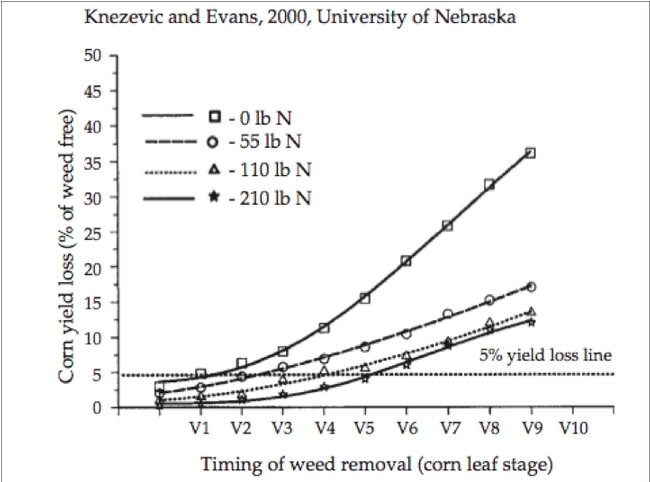It is weed season! There is a principle in weed management that weeds are often better competitors for resources. Competition begins as soon as seeds break dormancy. The seeds that germinate first are often the ones that obtain the most resources.
Most plants have developed deep roots before they are a few inches tall (Figs. 1 and 2). Growing beans in a paper towel will highlight this point, the plant will be many times deeper than it is tall. What this means for plant competition is that if there is a plant that germinates quickly and one that germinates slowly, the slow plant will be at a competitive disadvantage.
Fig. 1 a (left) carrot root after 47 days (Weaver and Bruner 1927). Note: Each square is one foot. Fig. 1b (right) Horned Spurge (Euphorbia brachycera, a perennial) root habit. The plant on the left was growing in the Great Plains of Colorado. The plant on the right was growing on a "half-gravel slide" in the Rocky Mountains of Colorado (Weaver and Bruner 1927). Note: Each square is 1 ft. The roots on the left plant are over 7 ft. long.
Fig. 2. Rooting depth of Sorghum A35/RQL12. Note: Leaf 2 is the stage of growth when the plant has 2 leaves, leaf 3 has 3 leaves. Total length at the 4th leaf stage is approx. 60 cm. The grid pattern in leaf 4, 5, 6 is an artifact of washing methods (Singh et al. 2008).
Many studies have looked at the effects of weed competition on crops. Researchers have even developed multiple tools to help growers estimate the most effective timing of herbicide application in relationship to the loss in yield a grower is willing to tolerate. For example, if the grower will tolerate a 5% loss in yield due to weed competition vs. a 10% loss in yield, she will be spraying much sooner in the 5% loss situation than the 10% loss situation. In many cases the threshold for yield loss is reached when the crop has only 2-5 leaves (in corn, see Fig. 3 below). The main point from these studies is that optimal weed control often occurs when the plants are young, because plants are always competing for resources.
This basic principle occurs in wildlands too. Many weeds outcompete native plants simply by germinating first. Those seeds that germinate first then usually start to use resources (water and nutrients) in the soil first and become well established. Notable weeds that germinate with fall rains are storkbill, annual grasses, like bromes, oats ,wild barley and others, as well as thistles. Some native plants will germinate as soon as the weeds, fiddleneck is one, but other native plants germinate more slowly. Partly because their germination is cued to wait for a large rainstorm when the chance of surviving to reproduction is high. In some years weeds will germinate with a small storm in October and if there is a large and early winter drought they will die by January. The slower germinating natives will not have germinated at all.
There is a lot of complexity in regards to which plants will become the most competitive or problematic for the landowner between seedling establishment and flowering. The main point is the race starts as soon as the soil is wet and seeds germinate. Most often weeds grow faster than native plants and keep racing ahead.
There are far fewer studies of the roots of weeds, as compared to crops. We can get an good idea of what the roots look like because of the groundbreaking work of John Weaver and William Bruner at Univ. of Nebraska. Weaver and Bruner observed a variety of field and vegetable crops and painstakingly dug the roots out of the soil using adjacent trenches (Weaver and Bruner 1926 and 1927). In general roots, especially when grown in good soil, are very long and very dense and often occupy a greater volume than the plant canopy.
Because we had a significant late-fall and winter storm, this season it appears that most weeds and natives are germinating at about the same time and the faster growing weeds will out compete the natives. In other years a small early storm can ‘flush out' weeds and preserve some, but certainly not all, native plants. Because of this precipitation pattern, ‘yield losses' in wildflowers could be high where weed populations are significant.
Fig. 3. Corn yield loss and the timing of weed management as it relates to fertilizer applications. Note: V1 is when 1 leaf is present, V2 is when 2 leaves are present, etc. In this model, to avoid losing 5% yield on an unfertilized or low fertilized field weed control will need to occur around the 2-3 leaf stage of the crop. Always consult a professional for personalized information.



